THN’s retrospective of Disney’s Animated Classics continues with ALADDIN.
Directed by Ron Clements and John Musker
1992/ 90 Minutes
The idea of adapting the Middle Eastern folk tale “Aladdin” was first proposed by songwriter Howard Ashman in 1988. He and longtime collaborator Alan Menken were working on THE LITTLE MERMAID at the time, and production was about to begin on BEAUTY AND THE BEAST. Ashman wrote an initial treatment for the project and collaborated on six songs with Menken.
After THE LITTLE MERMAID was completed, co-directors John Musker and Ron Clements turned their attention to writing a first draft script with Linda Woolverton providing a screenplay. Musker and Clements would go on to direct.
ALADDIN was the second Disney animated feature to use fully rendered and textured 3D CGI moving backgrounds, in combination with the traditionally animated character animation, a process experimented on with THE RESCUERS DOWN UNDER and utilised to great effect in BEAUTY AND THE BEAST.
This in turn would lead to the creation of “Deep Canvas” a technique developed by Disney 7 years later for use in TARZAN which allowed traditional hand-drawn characters to exist seamlessly in a fully three-dimensional environment.
BLACK FRIDAY
Production for Aladdin was not a smooth process; in the original pitch, Aladdin was a much younger character, about 13 years of age, and he lived with his mother. Studio chief Jeffrey Katzenberg thought the script “didn’t engage”, and on what came to be known Black Friday among the Aladdin animators, Katzenberg told the team to scrap virtually everything they’d been working on for months and start from scratch, without revising the movie’s release date of 25th November, 1992. Coupled with the passing of Howard Ashman, it was a dark time for the production team.
Two new writers were brought on board; Ted Elliot and Terry Rossio (who also collaborated on PIRATES OF THE CARIBBEAN, NATIONAL TREASURE, SMALL SOLDIERS and others). Within a week, the production team had pretty much overhauled the entire film; amongst the major changes were the removal of Aladdin’s mother- something the rest of the team had considered for some time despite its musical consequences (see below) and having Aladdin limited to only three wishes. With Katzenberg appeased, production was allowed to continue.
Later friction came between the studio and Robin Williams; after his success with 1897’s GOOD MORNING, VIETNAM, Williams agreed to voice the Genie on a Screen Actor’s Guild payrate- effectively, he worked for minimum wage- with a few provisos, a couple of quid pro quos: His voice was not to be used on merchandising such as toys, and that the Genie take up no more than a quarter of space on any advertisement or trailer.
Disney would go on to bend these agreements, and Williams withdrew his support for the film- to the point where he wasn’t even mentioned by name in making-of tome, “The Art of Aladdin”, referring to “The Voice of the Genie”.
Despite these troubles, ALADDIN went on to critical and commercial success, making $504 million dollars worldwide on its original release and earning a slew of awards, mostly for its score.
SYNOPSIS:A travelling peddler invites us to sample his wares, amongst them an innocuous oil lamp, which he claims to have changed the life of a young man whose worth lay deep within, a diamond in the rough.
The tale begins with Jafar, Grand Vizier and advisor to the Sultan of Agrabah. Tired of a life of servitude, he seeks the power to overthrow him and rule the land himself. To this end, he uncovers the Cave of Wonders, which in turn holds the Lamp, the key to Jafar’s coup. But only one may enter, one whose worth lies deep within…
Cut to Aladdin, a noble, kind-hearted street rat determined to overcome his society’s limitations, and his trusted sidekick, Abu the monkey. Whilst Aladdin dreams of life within the Palace, Princess Jasmine dreams of life beyond its walls; after meeting with yet another suitor, Jasmine runs away from the Palace. Finding herself in the marketplace, she’s saved from a merchant’s sword by Aladdin, and the two soon hit it off. By this point, Jafar has discovered Aladdin’s true worth, and orders his arrest- handily using Jasmine’s “kidnapping” as an excuse for his reported execution.
While the Sultan consoles a broken-hearted Jasmine, Aladdin languishes in the Palace dungeons. He is freed from captivity by a crooked old man who tells him of the Cave, and together they strike a bargain. Reaching the Cave, Aladdin is allowed entry, but must touch nothing but the Lamp. Venturing inside, Aladdin and Abu are befriended by a magic Carpet, who shows them the way to the Lamp. But, Abu’s greed gets the better of him, and the three of them are trapped inside the cave. Tearing off his disguise, Jafar screams in frustration.
Waking in the cave, alive and unharmed, Aladdin examines the lamp, and unleashes its Genie, a manic tour de force, who offers to grant the boy three wishes- with the proviso that the Genie can’t kill, create a romance, reanimate the dead, or wish for more wishes. Aladdin quickly tricks the Genie into freeing them from the cave without specifically wishing for it, and discusses his options with the Genie, who would wish for nothing but freedom from his eternity of servitude. Aladdin swears to release the Genie with his third and final wish, before making his first official one: to make him a prince, so he can “win” Jasmine.
Back at the Palace, Jafar and his henchparrot Iago hatch a new plan; trick the Sultan into arranging a marriage between himself and Jasmine, thereby becoming Sultan upon his father-in-law’s accelerated demise. The plan is suddenly delayed by the overly theatrical, extravagant arrival of Prince Ali Ababwa, who promptly earns the attentions of the Sultan, and the ire of Jasmine, who thinks him no better than the other suitors.
Against the Genie’s advice, Aladdin clings to the masquerade of being a Prince, which backfires horrifically with Jasmine after she recognises him from the marketplace. Despite these awkward moments, Aladdin and Jasmine end their romantic evening with a tender kiss.
As Aladdin lies back in content, he’s grabbed by the guards and thrown into the ocean on Jafar’s orders, but is saved by the Genie, using up his second wish. Aladdin returns t the castle just as Jafar makes his move on Jasmine. In the ensuing struggle, Jafar clocks the Lamp, hidden in Prince Ali’s turban. Jafar escapes, and the Sultan is overjoyed by Jasmine’s choosing Ali as her husband.
Still clinging to the façade, Aladdin manages to blow things with his friends. When he is called away, Iago sneaks into his room and swipes the Lamp. Just as Prince Ali is announced as Jasmine’s future husband, Jafar takes command of the Genie, and wishes to be Sultan. When Jasmine continues to show defiance, Jafar ups the game by wishing himself to be the world’s greatest sorcerer. He wastes no time in humiliating both Jasmine and her father, undressing Ali before her and banishing him to the ends of the Earth.
Jafar fails to notice the Carpet stowing away with Aladdin, and before too long, he’s on his way back. At the Palace, Jafar attempts to seduce Jasmine; when she sees Aladdin crawling around the rafters, she feigns affection to distract Jafar while Aladdin makes for the Lamp. Jafar catches onto the ruse and attacks, trapping Jasmine and cornering Aladdin. Jafar’s boasting to be “the most powerful being on Earth” backfires, as Aladdin convinces him that he’s still second-best to the Genie. Not to be outdone, Jafar makes his final wish, to become an all-powerful genie… and is promptly manacled and imprisoned in his own magic lamp, dragging Iago with him.
After the Genie dispatches Jafar and Iago to the Cave of Wonders, Aladdin reconciles with Jasmine. Fulfilling his promise, Aladdin frees the Genie, giving up his chance for power and wealth as Prince Ali. Seeing Aladdin’s true worth, the Sultan announces an amendment to the laws of Agrabah, allowing Jasmine to marry whomever she deems worthy.
The Genie leaves to explore the world as a free spirit while Aladdin and Jasmine celebrate their engagement…
Lessons Learned:
1. Sometimes you have to look a little deeper to see the truth in people.
2. Sometimes the hardest thing to do is the right thing to do.
3. When a giant tiger’s head tells you not to touch something, don’t touch it.
THE HERO
![]()
Thief, scoundrel, compulsive liar, Aladdin isn’t exactly the best role model. But, for all his obvious faults, he has a noble and kind heart. He gives up his food to a pair of starving children, and puts himself in harm’s way to save them moments later. Athletic and fearless, he has a kind of arrogance and swagger that proves to be his downfall at times, but at the end of the day, when he’s stripped of everything provided by the Genie, he shows his true colours.
Originally, Aladdin’s appearance was based upon Michael J. Fox, but as the film developed, Katzenberg felt the character didn’t appeal enough to women, and had him redesigned to be better built and to resemble Tom Cruise.
His singing voice was provided by Brad Kane; he was originally going to do speaking voice as well, but Scott Weinger was given the role late in production.
THE HEROINE
![]()
Voiced by Linda Larkin, Jasmine is very much of the same cloth as Ariel; independent, beautiful, and desperate for the chance to live her own life, beneath a shield of anger she has naïve, kind soul. She comes across as a very rounded character, and I’m not just talking about her physique, but for all her modern, feminist attitude, she still adheres to the old Disney Princess dream of finding true love with the right man.
THE VILLAIN
![]()
Jafar, voiced by Jonathan Freeman and basically ripped from THE THIEF OF BAGDAD (1940), is arguably one of the most successful and memorable Disney villains, manipulating and scheming his way to power. He was deliberately designed to contrast the rest of the cast, a mass of stark lines and vicious angles against the smooth curves of the other characters (which were based upon the works of caricaturist Al Hischfeld, whose work would inspire the “Rhapsody in Blue” Segment of FANTASIA 2000).
Jafar is quite similar to THE JUNGLE BOOK’s Shere Khan with his dry humour and laconic, quietly menacing attitude, whilst sharing a few key elements with SLEEPING BEAUTY’s Maleficent; the staff, the robes, the simmering psychosis. But it’s his sense of humour that really sets him apart, dark as it is, and the banter between him and Iago.
HIS FATE? Like many other Disney villains, his biggest weakness is his ego; he has Aladdin defeated, everything he’s ever wanted, but can’t bear the thought of still being second best. Aladdin tricks him into wishing himself a Genie, and is imprisoned in his own lamp as a result, but that’s not the end of the story.
SIDEKICKS AND HENCHMEN
![]()
ALADDIN’S background cast are a joy; they’re considerable more interesting than the leads half the time, in one case though pure performance.
Abu (voiced by Frank Welker) has a few moments, but is effectively an extension of Aladdin; aside from being his best (only?) friend, and at times his conscience, Abu could also be argued to be the flip side of the coin; while Aladdin scavenges and steals for survival, and shares his spoils with the less fortunate, Abu is more likely to keep food for himself- at least until shamed into sharing.
Gilbert Gottfried’s Iago on the other hand stands alone. Loud, obnoxious, degrading and insulting to anyone and everyone, he’s the target of much of the physical humour whilst also providing a few key plot twists; he’s the one that swipes the lamp from Aladdin, and pretty easily at that.
Having said that, he and Abu share both a selfish streak and the capacity for remorse; as the franchise progresses he becomes more of a hero while still retaining his self-centredness, with surprisingly deep knowledge in a number of fields.
And now for my favourite character, one without whom the movie wouldn’t be as much fun, or have as much heart. The Magic Carpet.
 Completely mute, communicating through pantomime, the Carpet selflessly aids Aladdin through many dangers, braving both fire and ice for the boy without any apparent concern from itself. It’s also a technical masterpiece, being one of the first computer animated characters in a feature film; its intricate woven design would have been far to complex to animate conventionally, or would haven taken an inordinate amount of time to do so, so the texture was created as a three-dimensional model which could stretch, squash and roll without the pattern changing, giving an unprecedented amount of consistency.
Completely mute, communicating through pantomime, the Carpet selflessly aids Aladdin through many dangers, braving both fire and ice for the boy without any apparent concern from itself. It’s also a technical masterpiece, being one of the first computer animated characters in a feature film; its intricate woven design would have been far to complex to animate conventionally, or would haven taken an inordinate amount of time to do so, so the texture was created as a three-dimensional model which could stretch, squash and roll without the pattern changing, giving an unprecedented amount of consistency.
THE GENIE
Where does the Genie fit in this list? Is he a hero? He almost destroys Agrabah while under Jafar’s control, but he’s only doing as commanded, and he’s obviously pained by his actions. If anything, he straddles the line between Sidekick and Henchman, but more accurately he’s a McGuffin. Jafar is willing to kill to get the lamp, and once he has it, Aladdin comes to break every moral code he has to hold onto it. The Genie is unwillingly caught in their struggle.
In any case, the Genie, voiced by Robin Williams, is a masterpiece of a character; unbound by the conventions of the film’s time period, he throws (then) modern and pop-culture references left right and centre, likely going right over the head of the kids and aiming straight for the parents in the audience. He’s a dynamic ball of energy that helps to hold the film together while taking it to a higher playing field. But where does he stand float?
I’m going to give him three bonus points, and you can decide for yourself where they go… ![]()
![]()
![]()
PLOT
![]()
Opening like a classic noir fantasy, the film takes us through some light political intrigue and some strong moral dilemmas, without becoming too heavy on the kids. The serious stuff is balanced well with the showstoppers and a good amount of comedy and the mystique of the source material.
It doesn’t really follow the plot of the original folk tale, but did you really expect that from Disney? As it stands, it retains a few important details such as the Cave and the Genie (well, one of them) imparting great wealth and power upon Aladdin until the villain tricks it away from them, and to be fair, every story changes and evolves over time, much as movies are remade or rebooted, taking elements of the old and weaving a new fairy tale for a new generation.
MUSIC
![]()
![]()
ALADDIN’S award-winning score is just, well, magical. From the ambience and colour of Agrabah to it’s Broadway-esque musical numbers, there’s hardly a moment where the music doesn’t engage with something and give a further depth to the film.
Its songs are all fantastic, if a little risqué at times; the opening number, “Arabian Nights” had to have a few lyrics changed when the American-Arab Anti-Discrimination Committee objected to “Where they cut of your ear if they don’t like your face”, and was reprised in every subsequent film and served as the intro to the TV show. Aladdin’s “One Jump Ahead” quickly and succinctly introduces us to the lead and the dangerous world he lives in, while its short reprise gives the character some real heart.
When the Genie appears however, things step up a gear. “Friend Like Me” and “Prince Ali” are both colossal showstoppers in their own right, drawing on both the talents of the animators and the orchestra, and the sheer entertainment power of Robin Williams. While Williams may not be the greatest singer in the world, by God he gives it his all, throwing multiple voices and accents like a tommy-gun. Its reprise, sung in vicious parody by Jafar, is the sorcerer’s true moment to shine, bringing all his repressed malice to the surface as he humiliates Aladdin.
“A Whole New World” is a rather drippy affair with Aladdin and Jasmine exploring the world that was opening up before them. Brad Kane and Lea Salonga take on singing duties from the lead cast, and for once, you can’t really tell a noticeable difference. It’s a sweet little song in line with “Part of Your World” and “Beauty and the Beast”, providing the emotional core of the film.
INTERESTING INTERLUDE: Jafar originally had a song of his own, titled “Humiliate the Boy”, which was more in line with Rattigan’s own song in THE GREAT MOUSE DETECTIVE. That was rejected, and a new piece by Time Rice, “Why Me” was scrapped for being too long, so we got another blast of “Prince Ali” instead.
In the preview screenings for the movie, nobody applauded after the song numbers. The animators wanted applause, so the “Applause” sign gag was put in at the end of “Friend Like Me”. The joke worked, and the sign was kept for the movie.
LAUGHS
![]()
Where do you want to start? The Genie’s popculture references and general mania, Iago’s snarky wisecracking, countless visual gags and a good deal of wordplay, ALADDIN is by far one of the funniest Disney films out there. There are very few characters who don’t find themselves on the sharp end of some actually quite vicious comedy, but mostly it’s Iago, providing a comic foil to the sinister nefariousness of Jafar.
SCARES
![]()
In contrast, ALADDIN also has some truly dark moments, coupled with the usual thrills. The Cave of Wonders itself is a figure of awesome stature; a colossal tiger’s head emerging from the sands, its deep, growling voice (provided by Frank… yes, him again)giving a forbidding warning, and when it’s not heeded, that moment when Abu grabs a giant scarlet gemstone, leading to a breathless chase through the Cave itself, is a truly chilling moment.
And let’s not forget Jafar; from his first scene, he’s an imposing figure, and as his power grows, so does the fear factor, reaching a head when he transforms into a giant freaking cobra, and all the while retaining his acerbic wit and black humour.
MORAL/EDUCATIONAL CONTENT
![]()
We learn that sometimes the truth is the most powerful weapon you can wield, and that for some people, freedom is the greatest treasure. The Sultan’s eyes are opened to the worth of a petty criminal, and Jasmine comes to love him for who he is, not for what he pretends to be.
We don’t get a great deal of useful knowledge of Agrabah or the Middle East in general; it’s not exactly the most PC of movies at times, but there’s a strong theme of temptation and how it can lead to one’s ruin. Abu’s temptation almost costs him and Aladdin their lives, while the power laid in Aladdin’s lap proves too much for him to handle. From Jafar we learn a few important lessons about trying not to overreach yourself in the pursuit of power, and most importantly, to always read the fine print.
LEGACY
![]()
THE RETURN OF JAFAR was the first direct-to-video animated feature, and was released in 1994. After being cast out by the Genie, Jafar’s lamp is discovered by the rather inept thief Abis Mal. Jafar is easily able to manipulate Mal into doing his bidding, planning revenge on Aladdin and his allies. It’s hampered by Williams’ absence, and was met with lukewarm reviews, but it has its moments. Dan Castellaneta does a decent enough job in Williams’ place, but his absence is felt.
An animated TV series swiftly followed, rocking up 86 episodes over two series earning a number of Daytime Emmy Awards for its sound and music. While Jafar is understandably absent, but Abis Mal makes the odd appearance alongside a new rogues’ gallery.
ALADDIN AND THE KING OF THIEVES followed in 1996, and saw Aladdin’s reunion with his long lost father Cassim, voiced by John Rhys-Davis, who just happens to be the King of Thieves, and searching for the fabled Hand of Midas, an artefact capable of turning anything into pure gold…
The cast of ALADDIN also made a surprise crossover with HERCULES: THE ANIMATED SERIES IN 1999; HERCULES AND THE ARABIAN NIGHT sees Hades striking a deal with Jafar to rid them of their mutual nemeses, only for them to join forces and defeat Jafar once and for all.
Well, unless you count Jafar’s appearances as a main villain in KINGDOM HEARTS.
A stage musical version was announced in 2010, premiering in Seattle in 2011 with Jonathan Freeman reprising his role as Jafar and reintroducing Omar, Kassim and Babkak, a trio of characters created for the original film but left unused. ALADDIN is set to open on Broadway in 2014.
FINAL SCORE: 45/53
NEXT TIME: THE LION KING

1 Comment
Leave a Reply
Leave a Reply
Latest Posts
-


Film Trailers
/ 2 hours agoM. Night Shyamalan’s ‘Trap’ trailer lands
Anew experience in the world of M. Night Shyamalan.
By Paul Heath -


Film News
/ 17 hours agoFirst ‘Transformers One’ teaser trailer debuts IN SPACE!
The animated feature film is heading to cinemas this September.
By Paul Heath -


Film Reviews
/ 17 hours ago‘Abigail’ review: Dirs. Matt Bettinelli-Olpin & Tyler Gillett (2024)
Matt Bettinelli-Olpin and Tyler Gillett direct this new horror/ heist hybrid.
By Awais Irfan -


Film Trailers
/ 18 hours agoNew trailer for J.K. Simmons-led ‘You Can’t Run Forever’
A trailer has dropped for You Can’t Run Forever, a new thriller led by...
By Paul Heath

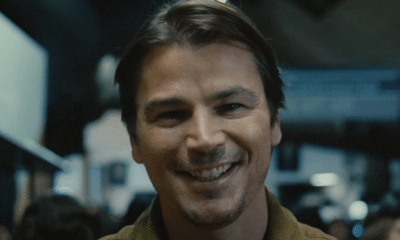

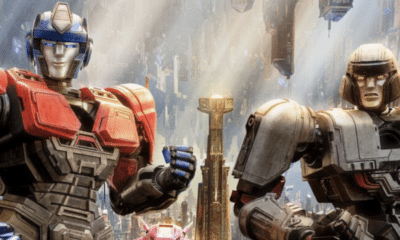

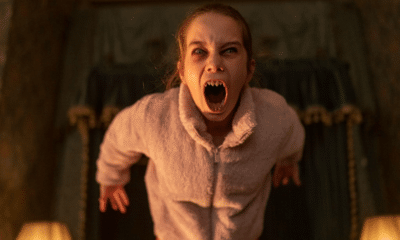

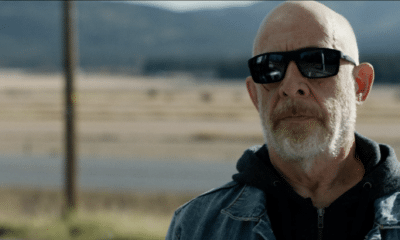



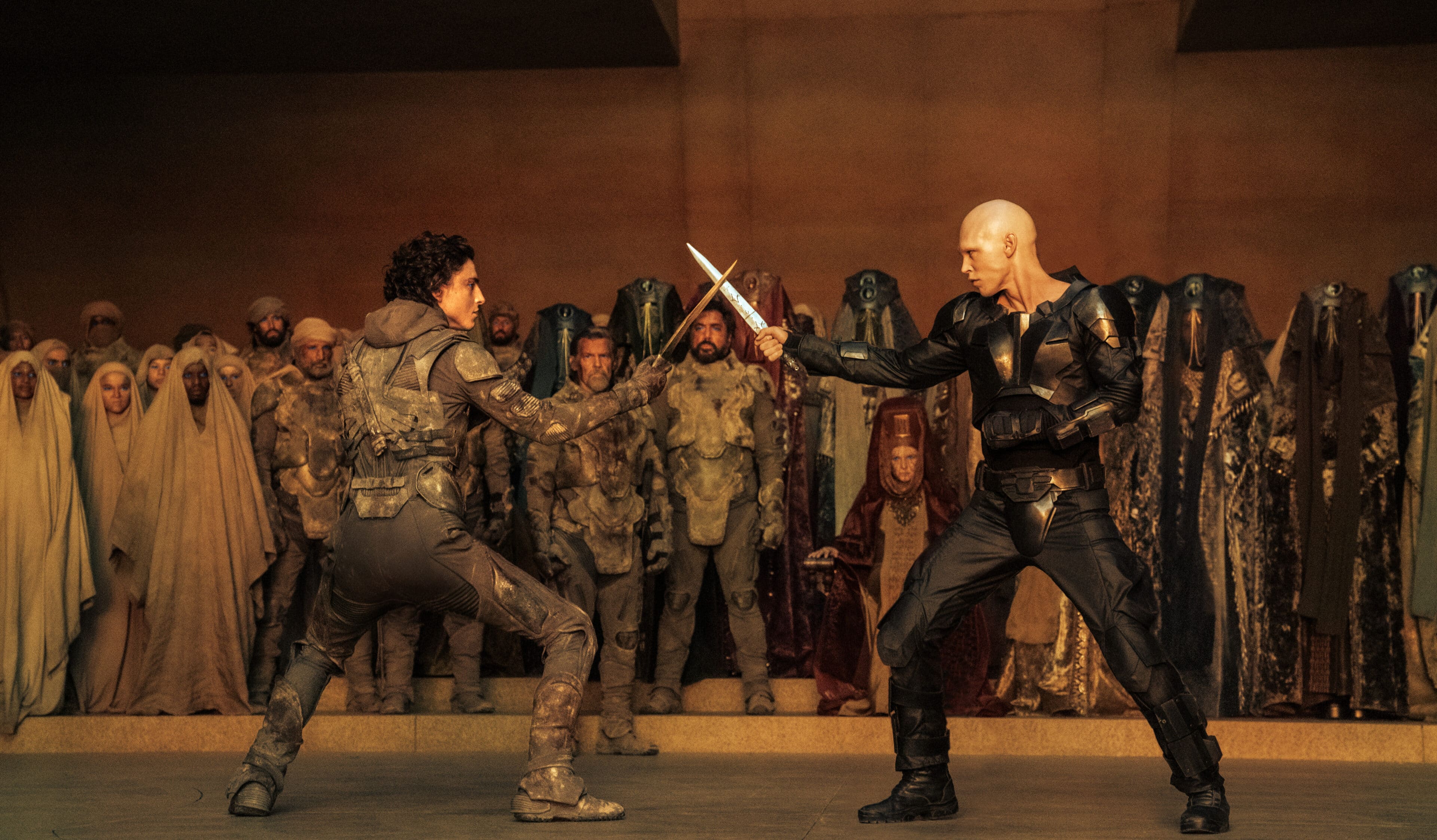
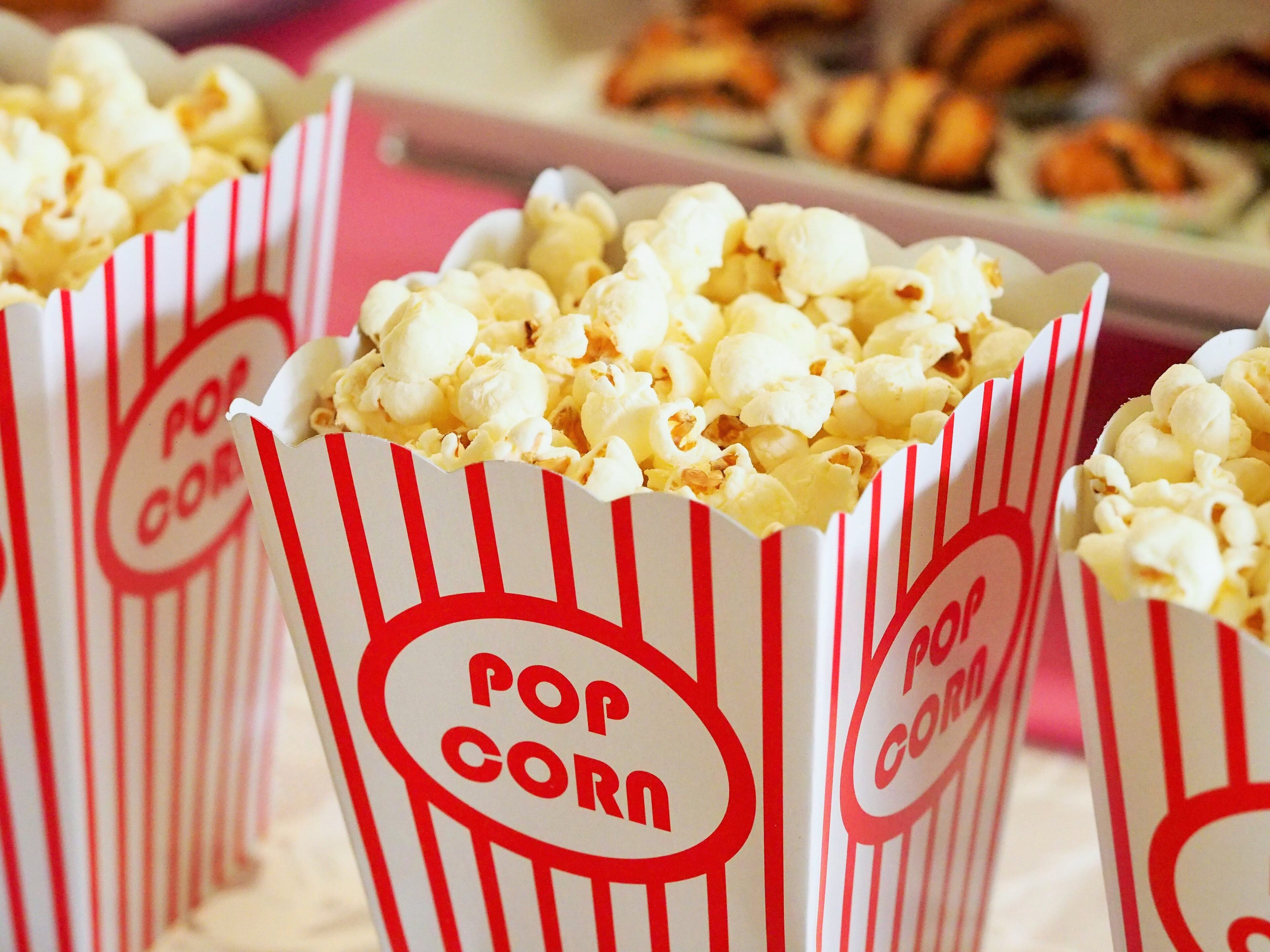

adriana
Aug 21, 2013 at 7:51 pm
Definitely one of my favorite’s. I completely agree, the villain is great!!
Greetings from Mexico, I just discovered your site and really like it 🙂